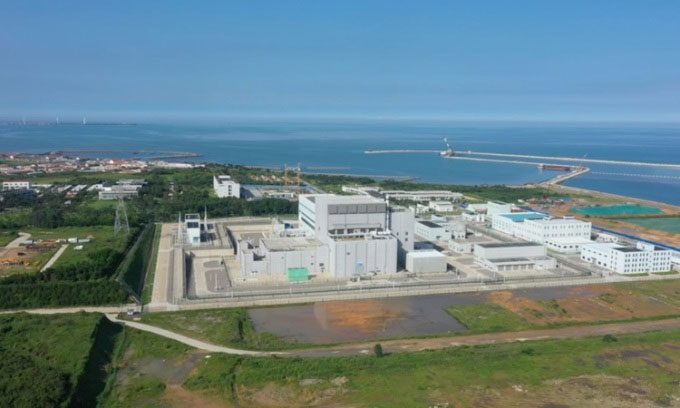The world’s first fourth-generation nuclear power plant, named Shidaowan, operated by Huaneng in Shandong Province, eastern China, commenced commercial operations on December 6, 2023.

Shidaowan nuclear power plant operated by Huaneng. (Photo: CGTN).
The new power plant has attracted global attention for its use of the High-Temperature Gas-Cooled Reactor with Pebble Bed (HTR-PM), which helps prevent the risks of meltdown or radioactive material leakage even under extreme conditions, reported CGTN on January 6.
“During the past few weeks of commercial operation, the two reactors at our power plant have maintained stable operation at their initial full capacity. They generate electricity daily with a capacity of 150 megawatts,” said Zhang Yijin, the plant’s CEO. “The electricity produced is used to supply the Shandong power grid.”
One of the key features of the fourth-generation reactor is its use of small spherical nuclear fuel akin to tennis balls, with each reactor containing up to 430,000 pebbles. Each pebble has a diameter of 6 cm and contains 12,000 fuel particles, each about one millimeter in size. Inside each particle is a very small fuel core surrounded by four layers of ceramic, according to Tong Liyun, another executive at the plant. The entire ceramic shell can withstand very high temperatures. Under any operating conditions, the temperature of the fuel pebbles does not exceed the temperature limit that the ceramic shell can withstand.

Nuclear fuel pebbles used at the plant. (Photo: CGTN).
Tong emphasized that this design ensures that nuclear material does not leak. Each pebble has an energy equivalent to 1.5 tons of coal and does not require the reactor to be temporarily shut down for fuel loading as is customary, allowing for continuous operation. The reactors are cooled with inert helium gas instead of water. They also utilize a passive heat removal system, enhancing safety for the high-temperature gas-cooled reactors.
The construction of the plant began in 2012. The plant connected to the power grid in 2021 and began commercial operation in 2023. It is expected that the plant will contribute to the regional electricity supply, promoting the development of other fourth-generation nuclear power plants. Currently, China is utilizing third-generation nuclear technology such as Hualong One and is making steady progress towards advanced technologies like those at the Shidaowan plant.


















































